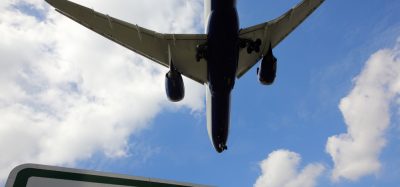Achieving effective ARFF in a challenging economy
- Like
- Digg
- Del
- Tumblr
- VKontakte
- Buffer
- Love This
- Odnoklassniki
- Meneame
- Blogger
- Amazon
- Yahoo Mail
- Gmail
- AOL
- Newsvine
- HackerNews
- Evernote
- MySpace
- Mail.ru
- Viadeo
- Line
- Comments
- Yummly
- SMS
- Viber
- Telegram
- Subscribe
- Skype
- Facebook Messenger
- Kakao
- LiveJournal
- Yammer
- Edgar
- Fintel
- Mix
- Instapaper
- Copy Link
Posted: 5 October 2011 | Jack Kreckie, Regulatory Affairs Officer at the Aircraft Rescue and Firefighting Working Group (ARFFWG) | No comments yet
Aviation is perhaps one of the most difficult businesses to maintain profitability in today’s struggling economy. The industry has seen dozens of carriers come and go. In recent years, even the legacy carriers have found themselves trying to recover from bankruptcy, sometimes merging with their competition as a means of survival. Fare wars, competition for routes and negotiating for preferred gate/space at lower costs are all part of the daily struggles required of an airline survival plan. Even the very foundation upon which certain airlines were established has evolved in this difficult market.
This is the first of two articles looking into the challenges currently facing the ARFF sector. Jack Kreckie’s second part of this piece will be published in the next issue of International Airport Review due out in November 2011.
Aviation is perhaps one of the most difficult businesses to maintain profitability in today’s struggling economy. The industry has seen dozens of carriers come and go. In recent years, even the legacy carriers have found themselves trying to recover from bankruptcy, sometimes merging with their competition as a means of survival. Fare wars, competition for routes and negotiating for preferred gate/space at lower costs are all part of the daily struggles required of an airline survival plan. Even the very foundation upon which certain airlines were established has evolved in this difficult market.
This is the first of two articles looking into the challenges currently facing the ARFF sector. Jack Kreckie’s second part of this piece will be published in the next issue of International Airport Review due out in November 2011.
Low cost carriers such as Southwest Airlines were conceptually based on avoiding larger airports, and making their home in the alternative airport to the big city. Their philosophy was that reduced costs and competition would draw their target passengers to the alternative airport. This is no longer the case, as Southwest now has service into Boston, San Francisco, Los Angeles, Detroit and Chicago. Also, currently underway is the merge of Air Tran and Southwest. Markers such as these clearly indicate the goal to survive in the industry.
ARFF firefighters think of survival in different terms. The primary concern of ARFF is the safety of aviation operations. When contemplating airline survival, the men and women in ARFF start worrying about corners being cut on maintenance of an aircraft. They see more accidents on the ramp as a result of reduced numbers of wing walkers. They see the introduction of lower cost entry level ramp workers who lack the experience to recognise that the aircraft is not lined up on the ‘T’, or its wings are hanging over the line. As the airline struggles to survive, the concerns of ARFF and safety officials increase.
The ‘disconnect’ between industry regulations and the priority of ARFF is a matter that demands attention. Airport operators need to stop blaming the regulations that they follow for any perceived deficit in the level of protection provided. The regulations serve as a minimum standard and the consensus standards (NFPA) explain the level of effort required to satisfy tasks. This article, published in two parts, attempts to clarify the distinction between the regulations and standards and provide guidance to help airport operators develop plans that satisfy their goals and intent in emergency preparedness and response.
For ARFF, the concern for safety covers the entire footprint of their jurisdiction. For many, it is to the boundaries of the airport and includes roadways, terminal complexes, and airfreight operations, catering facilities, maintenance hangers, hotels, and virtually every structure and person on the airport. Naturally, there is always mutual aid available for most airports. However, the arrival of mutual aid fire apparatus street side, at their terminal complex every time the fire alarm sounds causes congestion and traffic jams, inconveniencing customers and sometimes even resulting in missed flights. Many airports opt to have the ARFF Department respond ramp side, calling for mutual aid only if needed. This is sound logic provided that the apparatus and firefighters who are now inside the building, and thereby out of position for an airfield response, are not part of the necessary ARFF response.
Regulations for ARFF response are based on minimum standards set forth by the regulating agencies for airports/aerodromes based on the size of the aircraft with scheduled service into that aerodrome. That minimum standard is determined through processes that begin with science to determine firefighting agent quantities required and conclude with negotiations. The reduction of agent by 1/3 is a negotiated number to make the cost of providing the agent and the vehicles that carry it less expensive.
Federal Aviation Administration
Since 1970, the FAA Administrator has had the statutory authority to issue airport operating certificates to airports in the United States and their territories serving certain air carriers, and to establish minimum safety standards for the operation of those airports. This authority is currently found in Title 49, United States Code (U.S.C.) Section 44706, Airport Operating Certificates. The FAA uses this authority to issue requirements for the certification and operation of certain land airports. These requirements are contained in Title 14, Code of Federal Regulations Part 139 (14 CFR 139), Certification and Operations: Land Airports Serving Certain Air Carriers, as amended.
Initially, this statutory authority was limited to those land airports serving passenger operations of an air carrier that is conducted with an aircraft having a seating capacity of more than 30 passengers; this authority remains unchanged today. However, the Federal Aviation Administration Reauthorisation Act of 1996 broadened this authority. Section 44706 was amended to allow the FAA to certificate airports, with the exception of those located in the State of Alaska, that serve any scheduled passenger operation of an air carrier operating aircraft designed for more than nine passenger seats, but less than 31 passenger seats.
In 1970, when the statutory authority was drafted, the cargo carriers as we know them today did not exist. At that time, freight carriers were incidental to air carrier operations. The impact at any individual airport of these flight operations was not considered by regulators to be significant enough to be included in the requirements for ARFF. The primary concern was passenger aircraft due to the numbers of passengers on board.
Federal Express Airline was founded in 1971. The United Parcel Service was established in 1919 as a ground package delivery service. Both FedEx and UPS saw opportunities for growth with the 1977 Airline Deregulation Act. Today FedEx operates the largest aircraft fleet with almost 700 aircraft. UPS operates more than 200 aircraft and leases nearly another 300. Combined, these two airlines handle approximately 95 per cent of the airfreight in the United States and 90 per cent of the world’s freight. Although the carriers may not have made a significant impact in 1970 when the FAA was being authorised, they certainly have a major impact today. However, these aircraft are still not used to determine the minimum level of ARFF protection required at an airport. For this author, the word ‘minimum’ is disturbing when it relates to safety and the protection of people. Regulators are quick to say that the regulations only provide the ‘minimum’ level, and that aerodromes/airports are responsible for adjusting the level of protection to fit the risks which they are protecting. Some airports do just that, while others are satisfied providing the minimum number of gallons and ARFF vehicles required.
The cargo airlines serve as a perfect example of the need to look beyond the minimum standards of a regulation to the assets, agents and staffing required to handle an emergency on the aircraft that have service into a particular airport.
The FAA’s requirement as per 14 CFR Part 139.317 for an Index A airport is as follows:
One vehicle carrying at least;
- 500 pounds (225kg) of sodium-based dry chemical, halon 1211, or clean agent
- 450 pounds (202.5kg) of potassium-based dry chemical and water with a comm – ensurate quantity of ARFF to total 100 gallons (280 litres) for simultaneous dry chemical and aqueous film foaming forming foam (ARFF) application
International Civil Aviation Organisation (ICAO)
ICAO Airport Services Manual, Part 1 Rescue and Firefighting, provides quantities on minimum usable amounts of extinguishing agents. For comparison purposes, only the foam described by ICAO as ‘meeting performance level A’ is provided below:
Category 5
5400 litres (1426 gallons) of water
180kg (396lbs). Dry chemical powders or halon,
or 360kg (792lbs) of CO2
Lack of harmonisation in regulation and standards
The same aircraft, departing from the United States and landing in an ICAO regulated airfield will have two different minimum requirements for agent. Furthermore, at the FAA regulated airport, cargo aircraft are not factored into Index determination. Therefore, an Index A airport can have a cargo service of much larger aircraft, multiple times per day without any greater requirement for ARFF. There are a number of indications that the FAA would like to bring this regulation up to date. They have launched a number of cargo aircraft related programmes regarding training, tactics and strategy for managing cargo fires on freighter aircraft. They are unable to regulate ARFF protection levels based on cargo aircraft flight movements until the United States Congress includes that authorisation in the FAA re-authorisation. As a result of all the lobbies in Washington, only temporary/short term re-authorisations have been approved. In July of 2011, the FAA was partially shut down as a result of Congress being unable to agree on an FAA re-authorisation bill.
To illustrate the omission in the ARFF requirements, let us examine the following potential event. A DeHaviland Dash 8 departs from an airport in Canada bound for the United States. The Dash 8 is the largest passenger aircraft operating out of the Canadian airport so the airport is a Category 5 (ICAO) which is equivalent to an Index A (FAA) Airport. The Category 5 Airport in Canada is required to have a minimum of 5400 litres of water on one ARFF vehicle to protect the ARFF mission of Category 5 Airports.
The aircraft flies to an Index A airport in the United States, which is the FAA equivalent of Category 5. At the landing airport, the Dash 8 is only protected by a 379 litre ARFF vehicle.
This example clearly illustrates the disparity in the level of protection between ICAO and FAA. If that same size aircraft were conducting flight operations at an aerodrome that had adopted NFPA standards, (explained in the second part of this article), the protection would include two vehicles which each would be, at a minimum, the size of the Panther shown in picture 1.
At the same Index A Airport, suppose the landing immediately prior to the Dash 8 is a B-767-300 Freighter. If the Index for that US airport was based on five or more daily departures of a B-767-300 passenger version, the FAA Index for the airport would be E, requiring three ARFF vehicles with a total of 6,000 Gallons (22,712 litres). Whereas if the 767 is a freighter, regardless of the number of daily departures, the Index determination is made based on the average number of scheduled daily departures of the largest air carrier aircraft with nine seats or more. For the purpose of this example, the Dash 8 is used, as it is an Index A (Category 5) aircraft. Based on the FAA requirement, the minimum quantity of agent required for an Index A aircraft is 379 litres (100 gallons) of water along with the complementary agent that is required at all certificated airports.
It should be pointed out that the B-767-300 freighter carries the same quantities of fuel as the B-767-300 passenger version, 91,000 litres (24,000 gallons). The aircraft is 54.94 meters (156 feet long). A crash or fire of an aircraft this size will certainly put its occupants, the flight crew and supernumeraries at risk. The fuel load and cargo (including hazardous materials) will require a major firefighting effort. The aircraft will undoubtedly close the airport for an extensive period of time, yet the level of required protection is not based on this huge aircraft that may have as many as nine people onboard. Rather the level of protection is determined by the Dash 8 which also may have nine people onboard.
Next Issue
Jack Kreckie’s final part of this article will be published in November’s International Airport Review where he will be commenting on NFPA standards and TCA/PCA formulas.
About the Author
Jack Kreckie is a 32 Year veteran of Fire and EMS. He spent the last 28 years of his uniformed career in ARFF, his last 15 years as a Chief Officer. He is the author of the ARFF Chapter of the 20th Edition of the NFPA Handbook, and is a contributing author to Safety Management Systems in Aviation, and Safety Management in Aviation, Implementation both published by Ashgate Publishing. Jack is the proud recipient of the ARFF Legends Award, a lifetime achievement award for significant contributions that have improved the methods of aviation fire protection and prevention. He has served as an overseas guest lecturer for the Singapore Aviation Academy, Senior Fire Officers training programme in 2010 and 2011. In addition, Jack has served as a Director or Officer for the Aircraft Rescue and Fire Fighting Working Group for over 15 years.
















